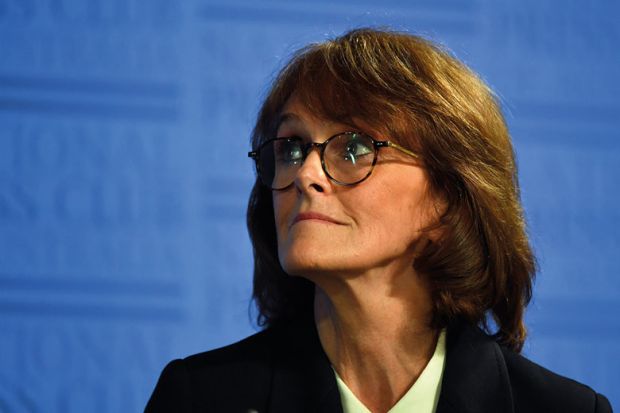While Australian efforts to achieve open access have been slow by Western standards, a proposal by the country’s top science diplomat could dramatically free up research.
A model floated by chief scientist Cathy Foley would give every Australian free access to scholarly journals while removing overseas paywalls on the 4 per cent of global research produced in Australia.
Dr Foley believes such a system could be implemented without increasing Australia’s already considerable public investment in journals and their contents. This includes up to A$1 billion (£535 million) a year on article processing and subscription fees, A$12 billion spent on university research and an incalculable amount of in-kind support through peer review and editing.
A key aim is to extend journal access beyond universities and research organisations to government agencies and businesses – particularly the 97 per cent with fewer than 20 staff.
“We’re a country of very small companies, and they’re just not [able] to invest in a swag of different journals, unless they’ve got a relationship with a university,” Dr Foley said. “How can you be a STEM professional…with very good research skills if you can’t use them as well as you would like, because a lot of the literature is not easily accessible?”
As well as delivering better economic and social outcomes, the model could help boost people’s defences against disinformation. “If they’re not able to get to the real evidence-based information, they’re going by what is possibly not correct,” she told Times Higher Education.
Under Dr Foley’s approach, a central implementing body armed with a pool of funds would negotiate open access deals with individual publishers on behalf of the entire country. She is reluctant to specify what the body would be or where its funds would come from, stressing that her role is purely advisory and that her ideas are taking form.
“Now’s the time to…open the discussion and get people thinking about a very different model, rather than incremental changes to the existing model. I guess I’m coming in with a different approach. You have to bring people with you rather than stamp in saying ‘I’ve got the way’, because it may not be right. We’ve got to understand the unintended consequences and make sure that it’s win-win. That doesn’t happen overnight.”
Dr Foley regards recent open access developments, such as the transformative agreements negotiated by the Council of Australian University Librarians, as “intermediate” arrangements. Under her vision, such deals would be thrashed out by one body rather than perhaps 100, as happens now. “There’s a lot of productivity and potential cost savings there.”
The research publication landscape could be transformed with just a few such deals, she noted, with more than 50 per cent of Australian research papers published by Elsevier, Springer Nature, Taylor & Francis and Wiley. Another 20-odd per cent find a home with 19 or so “middle” publishers.
Dr Foley expects to be ready to provide the federal government with “first pass advice” about her proposal by late next year. In the meantime, she is discussing the idea with Europe’s Coalition S and chief science advisers in other countries.
“There’s real interest and a willingness, even though there’s a level of discomfort. We need to see what’s possible. If we can do that, I think it will be transformational.”




